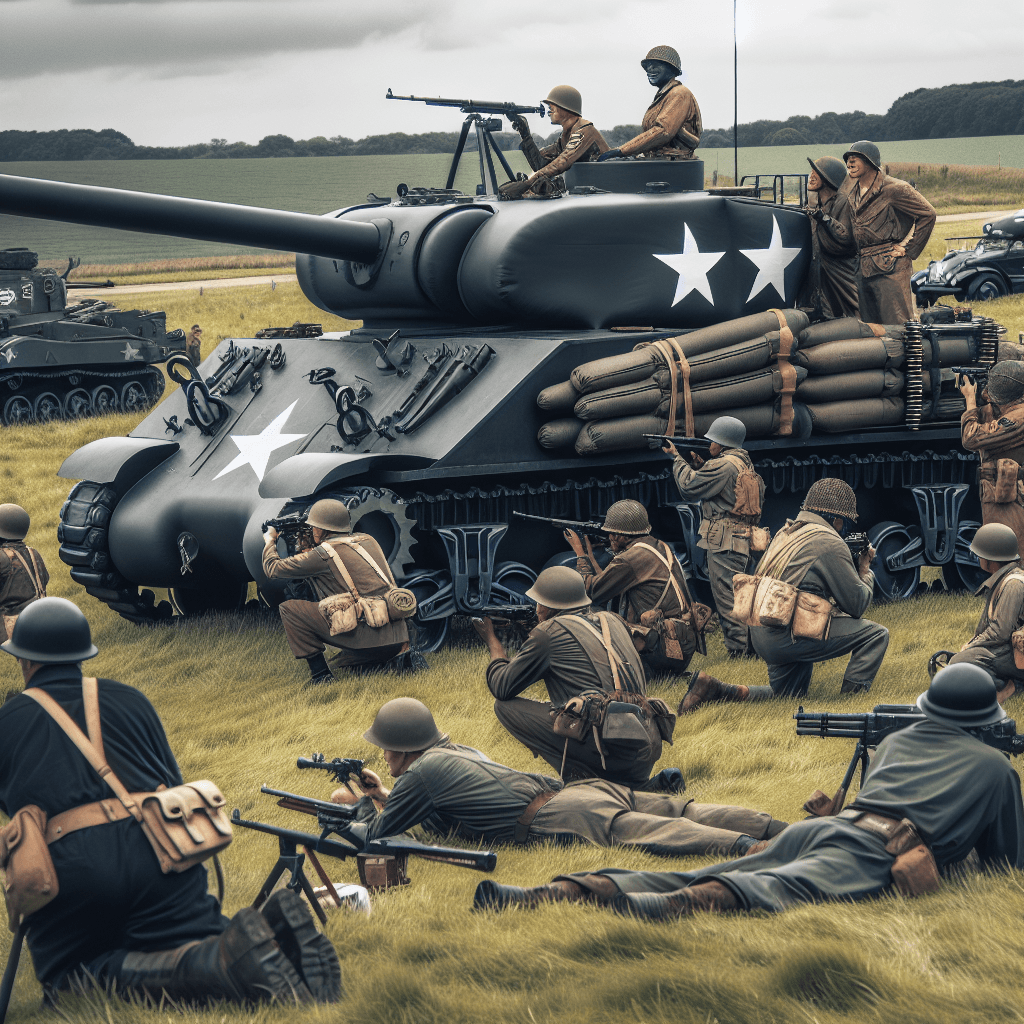Why did the US Army once command a ghost army of inflatable tanks
In the high-stakes theater of World War II, a top-secret U.S. unit waged war not with bullets, but with inflatable tanks, sonic deception, and masterful illusion to fool the entire German army.


Too Long; Didn't Read
During WWII, the US Army's secret Ghost Army used inflatable tanks, sound effects, and fake radio transmissions to deceive the Germans. This made the enemy think large Allied forces were in the wrong locations, drawing them away from real attacks and saving thousands of lives.
Ghosts of War: The Secret Story of Why the US Army Commanded a Ghost Army of Inflatable Tanks
Imagine this: a Nazi reconnaissance pilot flies over the French countryside in 1944, peering down to spot a massive American armored division poised for attack. He sees hundreds of Sherman tanks, artillery guns, and transport trucks—a formidable force. He radios the coordinates back to German High Command, which diverts precious troops to counter the threat. The only problem? The entire American division was a phantom, a clever illusion made of rubber, loudspeakers, and play-acting. This was the work of the 23rd Headquarters Special Troops, better known as the "Ghost Army." This post delves into the fascinating history of this top-secret unit, exploring why the US Army created a phantom force and how these masters of deception used inflatable tanks and tactical trickery to save thousands of lives and help win World War II.
The Birth of a Deception Unit
In the high-stakes theater of World War II, battles were won not just with bullets, but with brains. Allied commanders understood that misleading the German High Command about the location, size, and timing of their operations was a powerful strategic advantage. Inspired by British deception tactics used in North Africa, the US Army activated the 23rd Headquarters Special Troops in January 1944.
But this was no ordinary unit. Instead of filling its ranks with hardened infantry, the Army recruited a unique collection of talent:
- Artists from institutions like the Pratt Institute and the New York School of Art.
- Sound engineers, some of whom came from the prestigious Bell Labs.
- Advertising executives, architects, and set designers.
This motley crew of about 1,100 men was tasked with one of the most unusual missions of the war: to impersonate other, much larger US Army units to deceive the enemy. They were, in effect, a traveling roadshow of war, using creativity as their primary weapon.
The Toolkit of Trickery: How They Fooled the Enemy
The Ghost Army used a multi-layered approach to deception, combining visual, sonic, and radio trickery to create a believable illusion of a massive military presence. Their operations were meticulously planned and executed with theatrical flair.
Visual Deception: A Rubber Armada
The most famous element of their arsenal was the inflatable decoys. The unit was equipped with hundreds of life-sized, inflatable replicas of M4 Sherman tanks, 155mm howitzers, jeeps, and trucks. Made by rubber companies like Goodyear, these decoys weighed only about 90 pounds and could be inflated on the battlefield in minutes. From the air or from a distance, they were indistinguishable from the real thing. To complete the picture, soldiers would use tractors to create fake tank tracks around the "bivouac" area, making the scene appear active and lived-in.
Sonic Deception: The Sound of Battle
An army isn't just seen; it's heard. The Ghost Army’s sonic deception team used powerful speakers mounted on halftracks to blast curated soundscapes across the countryside. These recordings, engineered by Bell Labs, were an audio library of warfare. They could project the sounds of an entire armored division on the move, the clatter of bridge construction, or the chatter of troops, all audible up to 15 miles away. By playing these sounds at night, they could convince German intelligence that tens of thousands of men and their equipment had moved into an area while the real units were operating elsewhere.
Radio Deception and Special Effects
To sell the illusion completely, a special radio unit mimicked the communication patterns of the specific division they were impersonating. They sent out phony Morse code messages, carefully replicating the unique sending style—or "fist"—of the radio operators from the real unit.
The final layer was pure performance art. Soldiers from the Ghost Army would put on the patches of the division they were impersonating and drive to nearby towns. There, they would deliberately talk loosely in cafes and bars, spreading misinformation and rumors for local spies to overhear. They staged fake command posts and even generated phony traffic with a few real tanks and trucks to solidify the ruse.
The Impact of the Ghost Army
From the beaches of Normandy to the banks of the Rhine River, the Ghost Army conducted more than 20 battlefield deceptions. Their primary mission was to draw enemy units away from the actual locations of Allied attacks. In their most celebrated mission, "Operation Viersen" in March 1945, the unit successfully impersonated two entire divisions, simulating a force of 30,000 men to draw German defenders away from the 9th Army’s actual crossing point of the Rhine. Military analysts believe this single operation saved thousands of American lives.
Their work, however, was incredibly dangerous. The Ghost Army operated on or near the front lines, often with only a handful of real weapons for defense, intentionally drawing enemy fire upon their positions.
Conclusion
The story of the Ghost Army is a powerful testament to the impact of ingenuity in warfare. For over 50 years, their incredible contributions remained classified, a secret kept even from their own families. These artist-soldiers used inflatable tanks, sound effects, and theatrical skill not just to fool the enemy, but to save an estimated 10,000 to 30,000 Allied lives. The US Army commanded this ghost army because it understood that sometimes, the most powerful weapon is a well-crafted illusion. Recently honored with the Congressional Gold Medal, the legacy of the Ghost Army reminds us that creativity and deception can be as decisive on the battlefield as any traditional force.
More Articles

Why do movie punches sound so much crunchier and louder than real ones?
That sickening, bone-crunching punch you hear in the movies is a lie, and the secret ingredient is probably sitting in your refrigerator right now.

What makes a beer bottle suddenly foam over just from a light tap on top?
It’s not magic, it’s a shockwave; discover the explosive physics that turns a gentle tap on your beer bottle into an instant foamy geyser.

Why do police officers touch the back of a car during a traffic stop?
It’s not a random habit; that simple touch is a calculated, old-school tactic designed to leave a crucial and potentially life-saving piece of evidence behind.